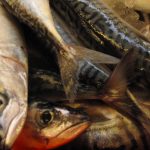Increasing demand of seafood put immense pressure on the aquaculture industry to find sustainable ways to increase productivity. The popularity of seafood and its health benefits increases the demand and it will keep rising for several decades. Experts were presenting new data at a recent meeting of international aquaculture and seafood industry leaders in Kuala Lumpur, Malaysia.
The Global Outlook for Aquaculture Leadership (GOAL) 2010 meeting was presented by the Global Aquaculture Alliance and the Malaysia Department of Fisheries, revealed global trends that are driving seafood demand and sustainable solutions for increased aquaculture productivity.
China is by far the world’s leading aquaculture producer, but it is increasingly importing seafood to meet domestic demand. Economist Ragnar Tveteras evaluated economic indicators from the International Monetary Fund and World Bank to project a startling conclusion that triangulated with feedback from previous speakers on the Chinese market: China will shift from being a net seafood exporter to a net seafood importer by 2011.
There is a greater need to sustainably increase seafood production to meet the rising demand by adopting improved technologies that produce more seafood with fewer resources. Robins McIntosh of the C.P. Group said that expanding production into undeveloped regions, particularly Africa, would lead to important community benefits and economic development.
GOAL speakers emphasized that to assure sustainability, certification and traceability of each link in the supply chain are critical. They provided feedback on major issues through individual responses to questions posed through an audience response system. A key benefit of GOAL was the opportunity for industry leaders to network during pre-conference tours, luncheons, coffee breaks and receptions.
The Global Aquaculture Alliance, the leading standards-setting organization for aquaculture seafood, is an international, non-profit trade association whose Best Aquaculture Practices program provides comprehensive, metrics-based certification for aquaculture facilities – including farms, hatcheries and processing plants.








